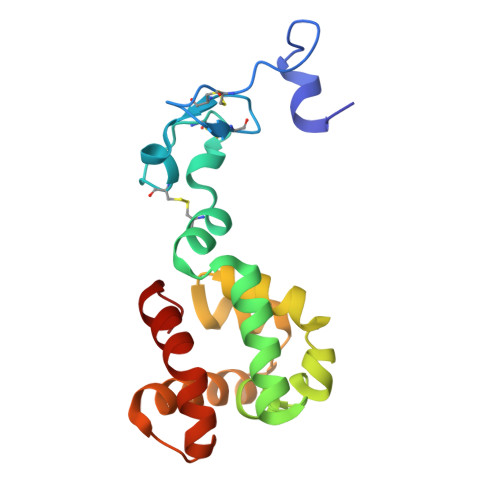Mechanistic and structural studies reveal NRAP-1-dependent coincident activation of NMDARs.
Goodell, D.J., Whitby, F.G., Mellem, J.E., Lei, N., Brockie, P.J., Maricq, A.J., Eckert, D.M., Hill, C.P., Madsen, D.M., Maricq, A.V.(2024) Cell Rep 43: 113694-113694
- PubMed: 38265937
- DOI: https://doi.org/10.1016/j.celrep.2024.113694
- Primary Citation of Related Structures:
8V14 - PubMed Abstract:
N-methyl-D-aspartate (NMDA)-type ionotropic glutamate receptors have essential roles in neurotransmission and synaptic plasticity. Previously, we identified an evolutionarily conserved protein, NRAP-1, that is required for NMDA receptor (NMDAR) function in C. elegans. Here, we demonstrate that NRAP-1 was sufficient to gate NMDARs and greatly enhanced glutamate-mediated NMDAR gating, thus conferring coincident activation properties to the NMDAR. Intriguingly, vertebrate NMDARs-and chimeric NMDARs where the amino-terminal domain (ATD) of C. elegans NMDARs was replaced by the ATD from vertebrate receptors-were spontaneously active when ectopically expressed in C. elegans neurons. Thus, the ATD is a primary determinant of NRAP-1- and glutamate-mediated gating of NMDARs. We determined the crystal structure of NRAP-1 at 1.9-Å resolution, which revealed two distinct domains positioned around a central low-density lipoprotein receptor class A domain. The NRAP-1 structure, combined with chimeric and mutational analyses, suggests a model where the three NRAP-1 domains work cooperatively to modify the gating of NMDARs.
- Department of Neurobiology, University of Utah, Salt Lake City, UT 84112-9458, USA.
Organizational Affiliation:

















